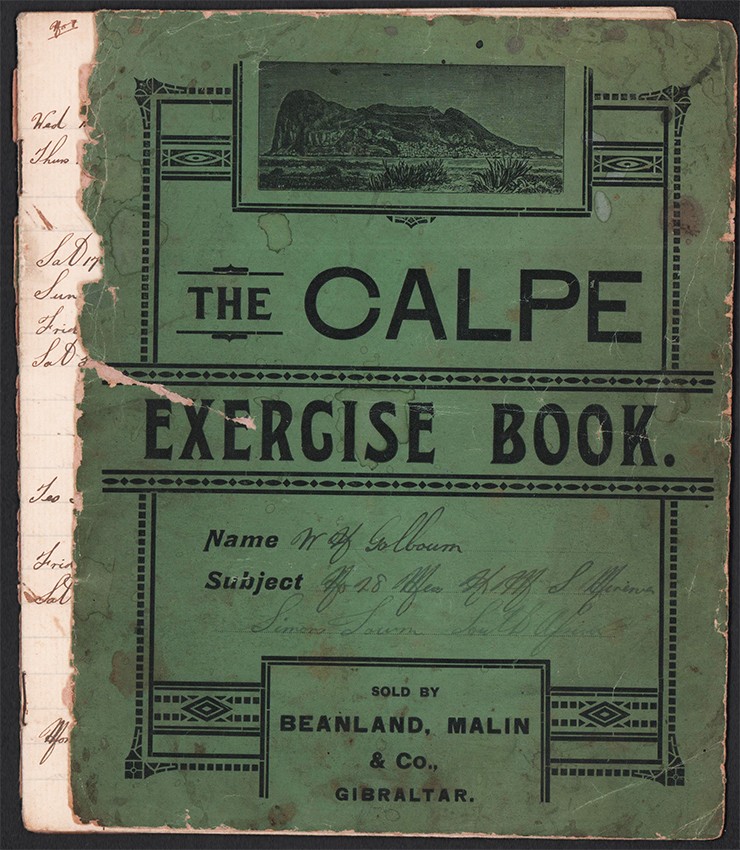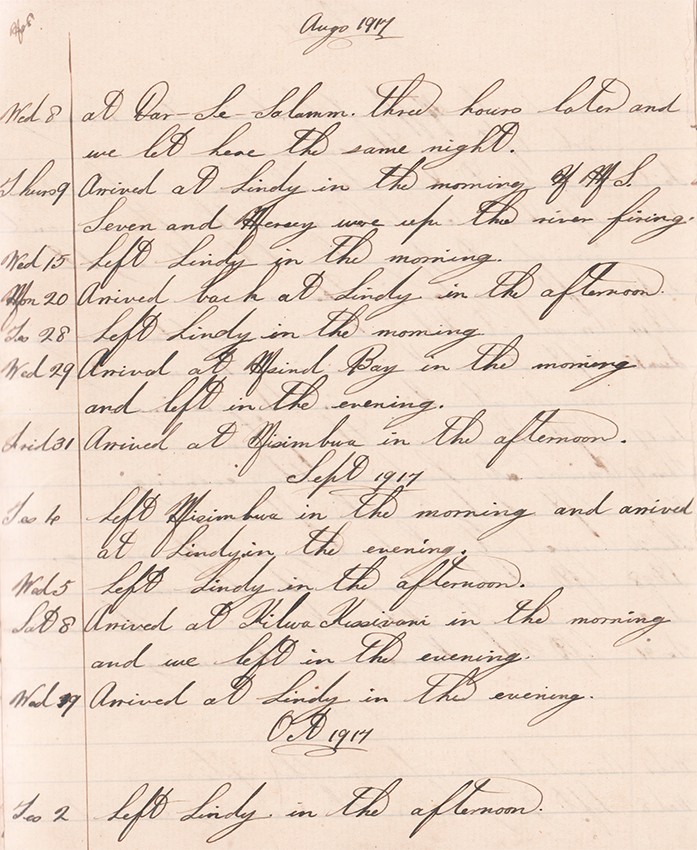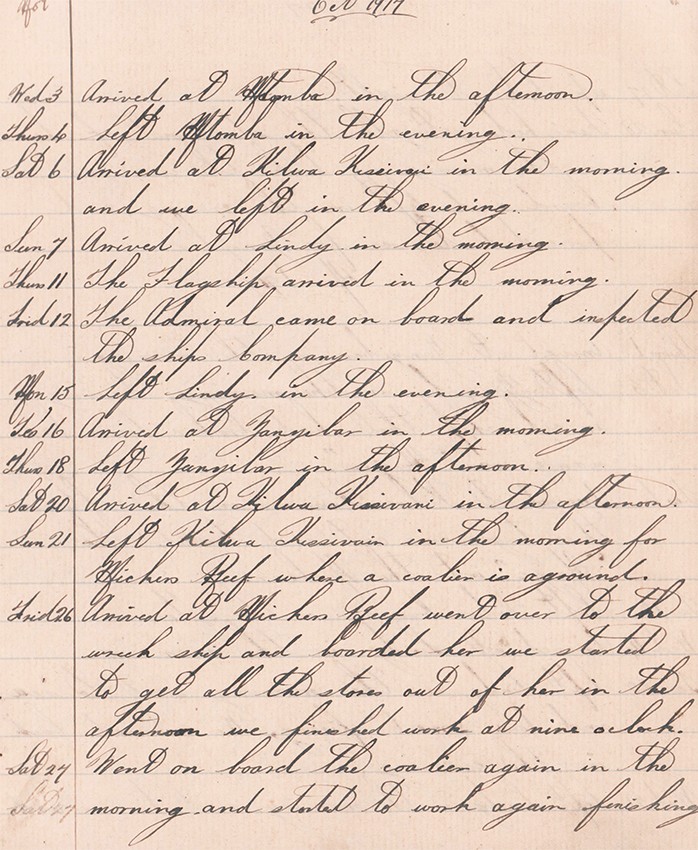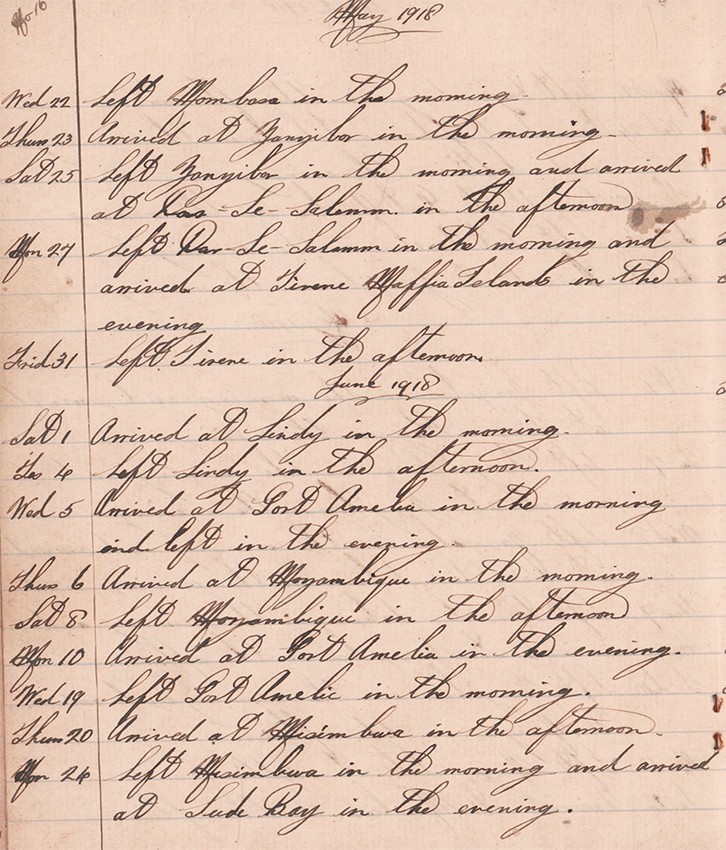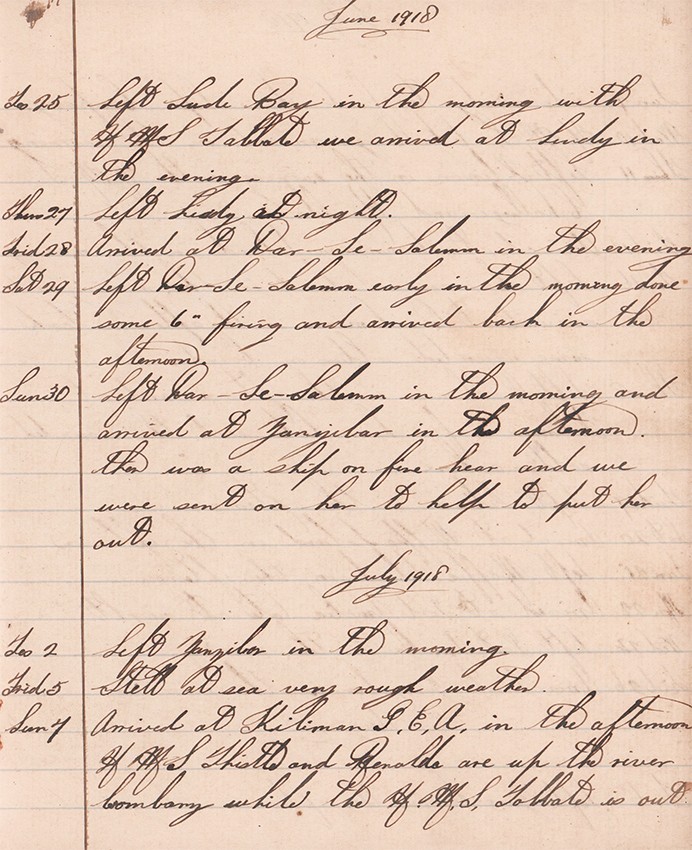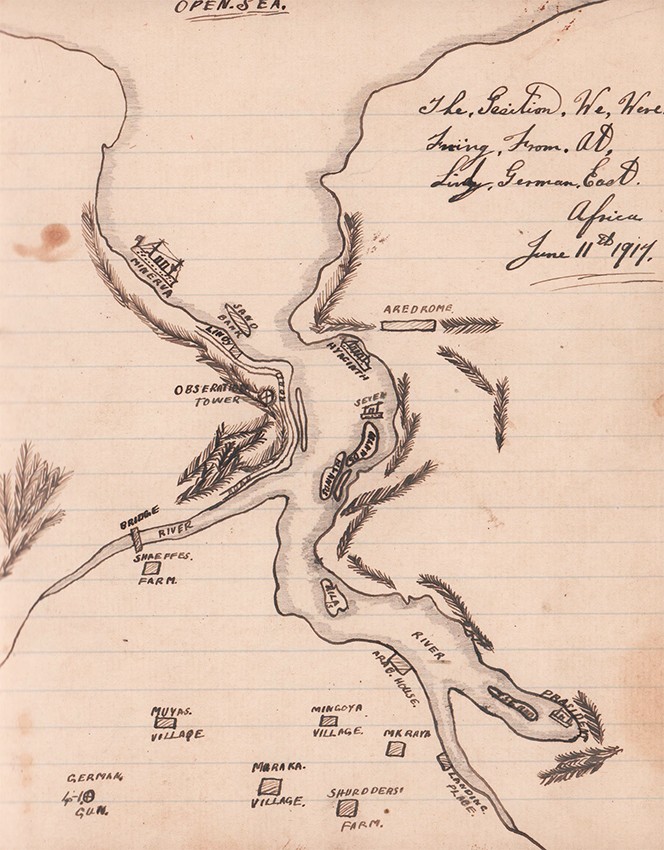Handwritten log in an a5 exercise book (Calpe Exercise Book) in a legible style in ink - 27 pages. The front cover of the exercise book is torn and detached, as is a page of the log.
The entries cover the period from March 4 1917 to April 9 1919. There is a hand-drawn map at the end of the log with the positions of the Minerva and Hyacinth depicted on it at Lindy (sic) - Lindi, German East Africa on June 11 1917.
He writes a detailed description of the Hyacinth and its manoeuvres from June 11 - June 16 1917. On 22 December 1917 he outlines their arrival in Simonstown. There are entries from Mossel Bay, Port Elizabeth, and East London. He also lists the names of the places he has visited in Africa at the back of his log.
A newspaper clipping (source and date unknown) of a photograph of the HMS Hyacinth which is to be broken up is loosely inserted.
HMS Hyacinth was one of three Highflyer-class protected cruisers built for the Royal Navy in the 1890s. Initially assigned to the Channel Fleet, she spent much of her early career as flagship for the East Indies Station. She was reduced to reserve in 1912 after a lengthy refit before becoming the flagship of the Cape of Good Hope Station in 1913.
After the beginning of World War I in August 1914, she spent the first few months of the war escorting convoys around South Africa. In early 1915, she was deployed to German East Africa to blockade the German light cruiser SMS Königsberg. She destroyed a German blockade runner attempting to bring supplies through the blockade in April and sank a German merchant vessel in early 1916. Hyacinth remained on the Cape Station for the rest of the war and was paid off in 1919, although she was not sold for scrap until 1923. https://en.wikipedia.org/wiki/HMS_Hyacinth_(1898)
On the outbreak of the First World War in August 1914, HMS Minerva was part of the 11th Cruiser Squadron based in Ireland, but was detached to join the 5th Cruiser Squadron in September, with the responsibility of intercepting enemy merchant shipping trying to return to Germany or Austria. During these operations it captured and scuttled the Austrian merchant ship Bathori.
Minerva escorted a troop convoy from Britain to Egypt in November 1914, and formed part of the Allied naval forces supporting the Gallipoli Campaign. When the Turkish torpedo-boat Demirhisar attempted to attack Allied troop ships near Chios on 16 April 1915, Minerva, together with the destroyers Jed, Kennet and Wear, forced Demirhisar to run aground, where the Turkish torpedo boat was later destroyed.
Minerva supported the landing at Cape Helles in April and at Suvla Bay in August. Minerva was deployed to the China Station in 1916, and then to the Indian Ocean and Red Sea in 1917, then remaining off East Africa until the end of the war. She returned to Queenstown, Ireland in 1920, and was sold for scrapping on 5 October 1920. https://en.wikipedia.org/wiki/HMS_Minerva_(1895)
- Sold By: Clarke's Africana & Rare Books
- Contact Person: Paul Mills
- Country: South Africa
- Email: [email protected]
- Telephone: 021 794 0600
- Preferred Payment Methods: Visa & Mastercard via PayGate secure links and Bank transfers.
- Trade Associations: ABA - ILAB, SABDA

Similar lots in the current auction View all
Click on an item to view more details and to bid.

